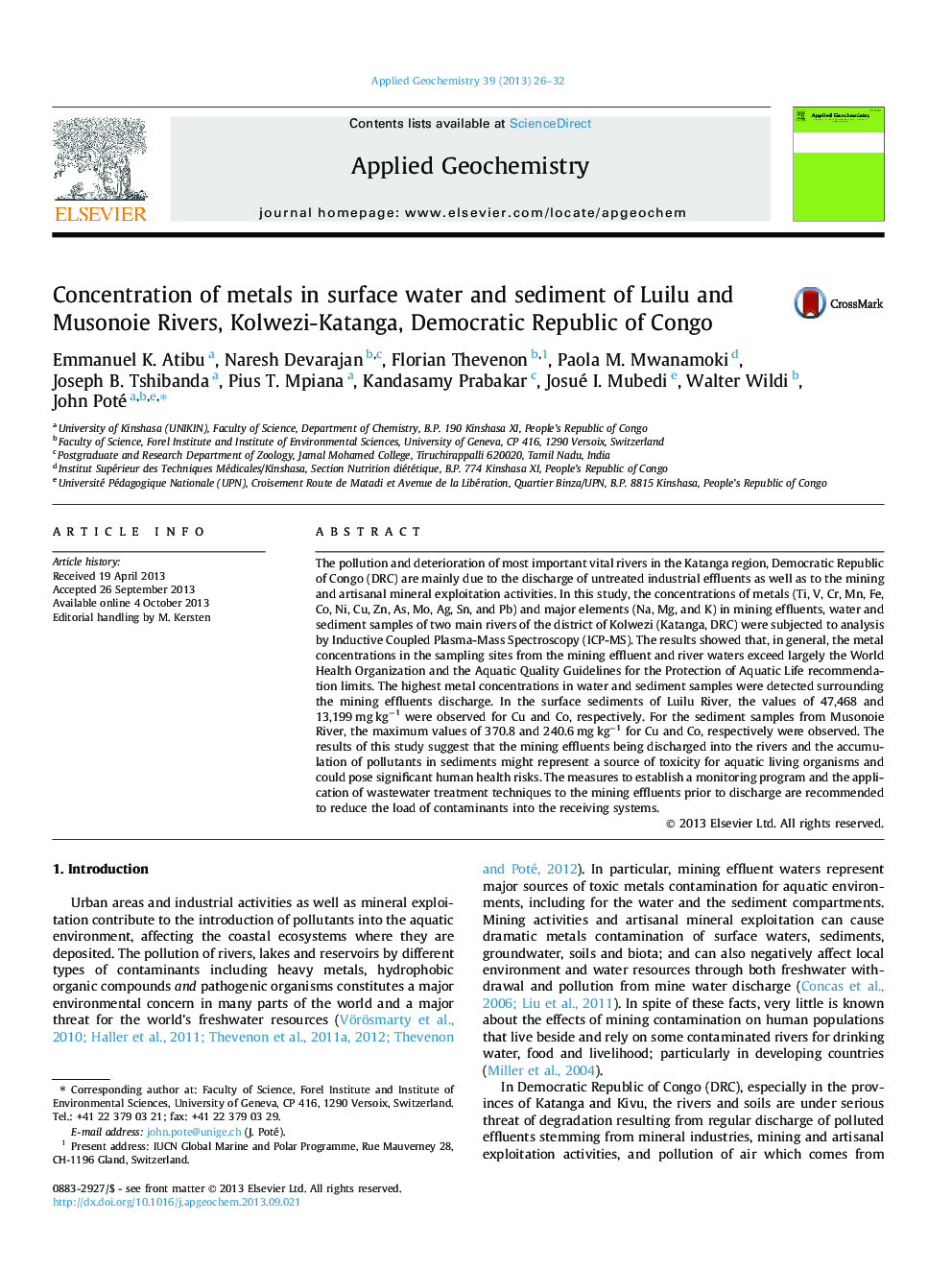| Article ID | Journal | Published Year | Pages | File Type |
|---|---|---|---|---|
| 4435885 | Applied Geochemistry | 2013 | 7 Pages |
•We assessed the concentration of heavy metals in Luilu and Musonoie Rivers.•We compared the concentration of heavy metals with sediment quality guidelines and Congo recommendations.•Mining effluents, water and sediments of rivers are highly contaminated by heavy metals.•The concentration of Cu, Co and Pb exceeds the sediment quality guidelines and Congo recommendations.
The pollution and deterioration of most important vital rivers in the Katanga region, Democratic Republic of Congo (DRC) are mainly due to the discharge of untreated industrial effluents as well as to the mining and artisanal mineral exploitation activities. In this study, the concentrations of metals (Ti, V, Cr, Mn, Fe, Co, Ni, Cu, Zn, As, Mo, Ag, Sn, and Pb) and major elements (Na, Mg, and K) in mining effluents, water and sediment samples of two main rivers of the district of Kolwezi (Katanga, DRC) were subjected to analysis by Inductive Coupled Plasma-Mass Spectroscopy (ICP-MS). The results showed that, in general, the metal concentrations in the sampling sites from the mining effluent and river waters exceed largely the World Health Organization and the Aquatic Quality Guidelines for the Protection of Aquatic Life recommendation limits. The highest metal concentrations in water and sediment samples were detected surrounding the mining effluents discharge. In the surface sediments of Luilu River, the values of 47,468 and 13,199 mg kg−1 were observed for Cu and Co, respectively. For the sediment samples from Musonoie River, the maximum values of 370.8 and 240.6 mg kg−1 for Cu and Co, respectively were observed. The results of this study suggest that the mining effluents being discharged into the rivers and the accumulation of pollutants in sediments might represent a source of toxicity for aquatic living organisms and could pose significant human health risks. The measures to establish a monitoring program and the application of wastewater treatment techniques to the mining effluents prior to discharge are recommended to reduce the load of contaminants into the receiving systems.
